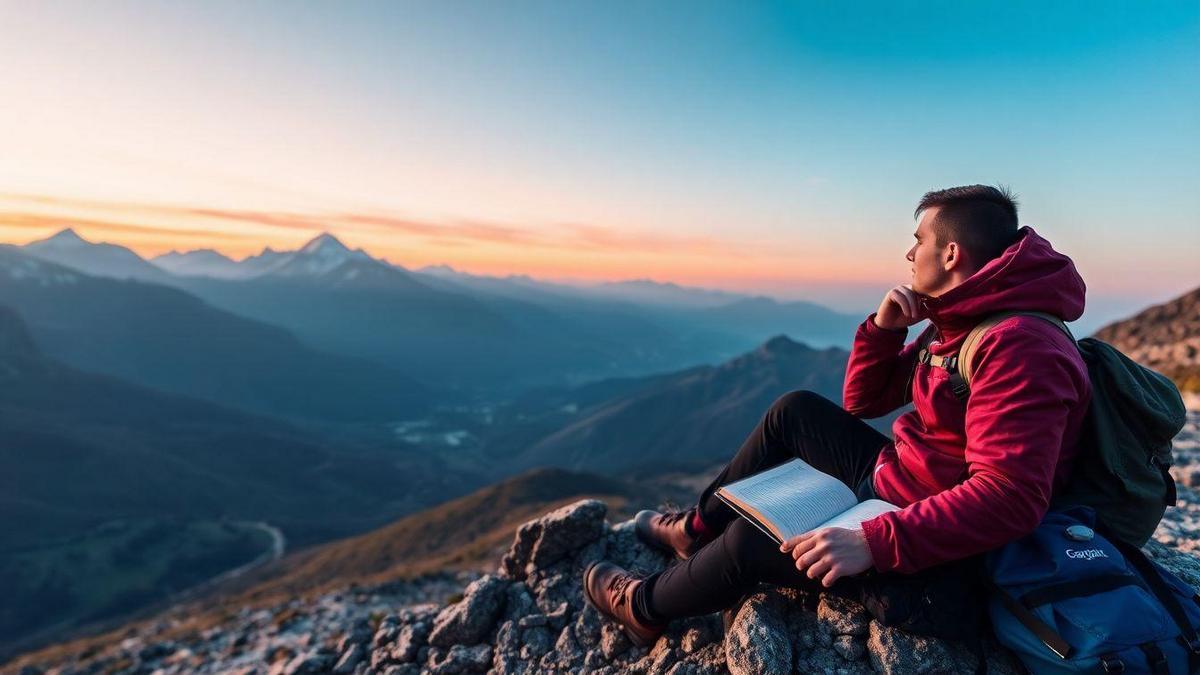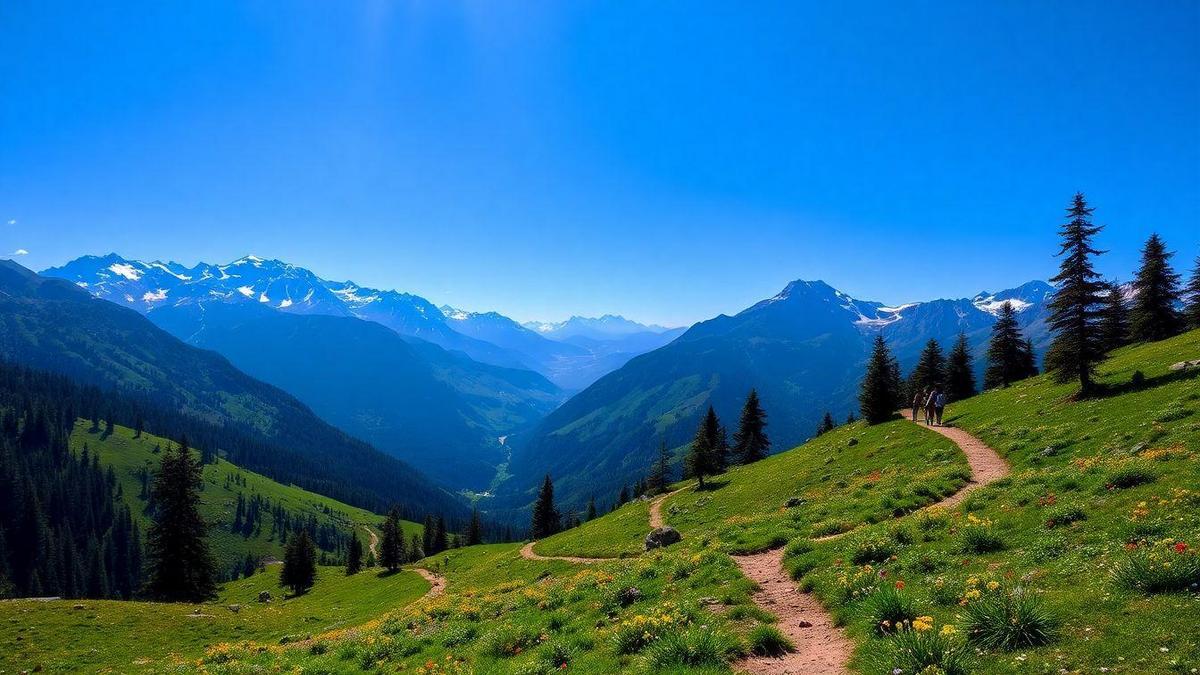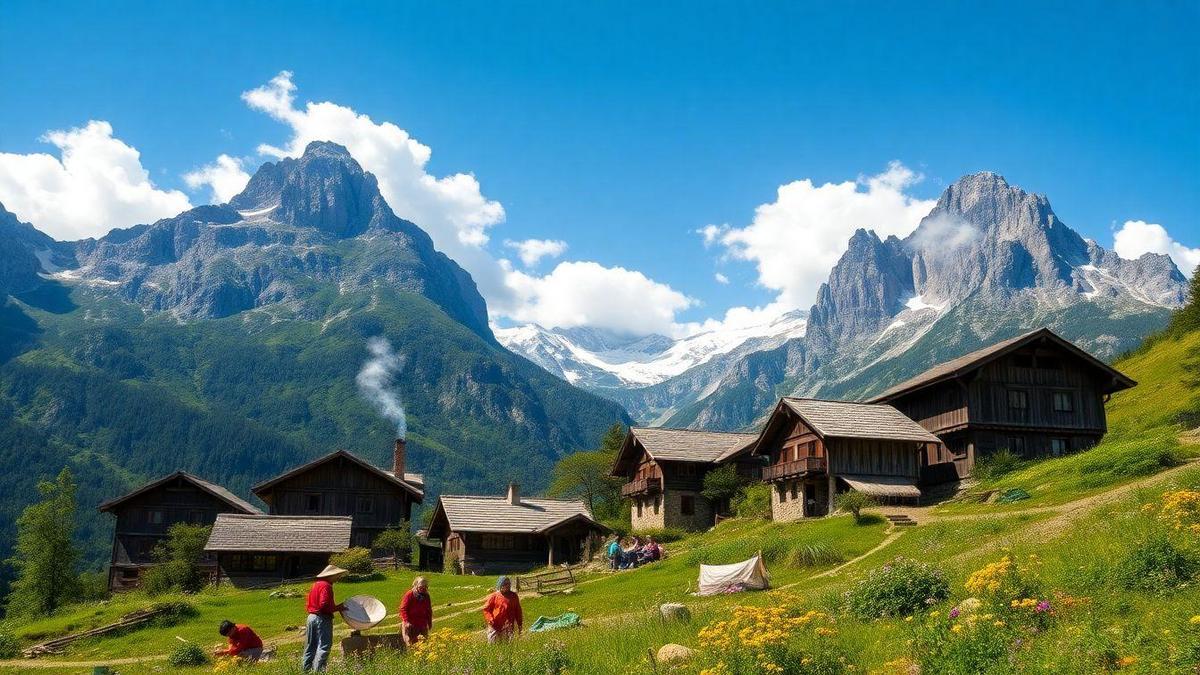
Understanding Mental Preparation for Mountain Climbing
The Importance of Mental Resilience in Climbing
When you think about climbing a mountain, you might picture the steep slopes and rocky paths. But mental resilience plays a huge role too. It’s like the backbone of your climb. You need to be strong in your mind just as much as you are in your body.
Imagine standing at the base of a towering peak. The air is thin, and the climb looks tough. Your mind can either push you forward or hold you back. When challenges arise, like bad weather or fatigue, your mental strength can help you keep going. It’s the difference between giving up and reaching the summit.
How Mental Preparation Strategies Enhance Your Climb
Using mental preparation strategies for challenging mountain ascents can make all the difference. Here are a few ways to boost your mental game:
- Visualization: Picture yourself reaching the top. See every step, every breath, and the view from the summit. This mental image can motivate you when the going gets tough.
- Positive Self-Talk: Replace negative thoughts with encouraging words. Instead of saying, “I can’t do this,” tell yourself, “I am strong enough to finish this climb.”
- Mindfulness: Stay present. Focus on your breath and the sounds around you. This helps reduce anxiety and keeps you grounded during your ascent.
Building Your Mental Toughness for Challenging Ascents
Building mental toughness is like training a muscle. The more you work on it, the stronger it gets. Here are some practical steps to help you:
| Strategy | Description |
|---|---|
| Set Small Goals | Break your climb into smaller, manageable parts. |
| Embrace Discomfort | Learn to accept discomfort as part of the journey. |
| Reflect on Past Success | Think about challenges you’ve overcome before. |
By following these strategies, you can prepare your mind for the climb ahead. Remember, each mountain is unique, and with the right mental tools, you can conquer them all.
Visualization Techniques for Successful Ascents
How to Use Visualization to Prepare for Your Climb
When you think about climbing a mountain, have you ever considered the power of visualization? This technique can be a game-changer. Imagine yourself at the base of the mountain, feeling the cool breeze and the weight of your backpack. Now, picture every step you will take. Visualizing your climb helps your mind and body prepare for what’s ahead.
To get started, find a quiet place. Close your eyes and take deep breaths. Picture yourself on your journey. See the rocky paths, the stunning views, and even the challenges. Feel the excitement and the determination in your heart. This mental exercise can make a big difference. It’s like training your mind to be ready for the climb.
The Science Behind Visualization and Performance
You might wonder, “Does this really work?” The answer is yes! Research shows that visualization can improve performance. When you visualize a task, your brain activates the same areas as if you were actually doing it. This means your mind is getting a workout too!
Here’s a simple table to show how visualization helps:
| Benefit | Description |
|---|---|
| Increased Confidence | Visualizing success boosts your belief in yourself. |
| Reduced Anxiety | Imagining your climb helps calm your nerves. |
| Improved Focus | Visualization sharpens your attention on your goals. |
By using these techniques, you can feel more prepared and ready for the challenges of your ascent.
Creating a Mental Picture of Your Climbing Journey
Creating a vivid mental picture is key. Start by imagining the beginning of your climb. What do you see? The lush greenery? The rocky terrain? Then, move on to the middle of your journey. Picture the obstacles you might face, like steep paths or sudden weather changes.
Finally, visualize reaching the summit. Feel the joy and pride in your heart. Celebrate that moment in your mind. This exercise can help you stay motivated when the going gets tough.
Remember, mental preparation strategies for challenging mountain ascents are just as important as physical training. By visualizing your journey, you’re not just dreaming; you’re preparing to conquer that mountain.
Mindfulness Practices for Mountain Challenges
Staying Present During Your Climb
When you’re climbing a mountain, it’s easy to let your mind wander. You might think about the summit, the weather, or even the long trail ahead. But staying present is key. Focus on each step you take. Feel the ground beneath your feet. Listen to the wind and the sounds of nature. This helps you connect with your surroundings and can make the climb feel less overwhelming.
Benefits of Mindfulness for Reducing Anxiety
Mindfulness can be a powerful tool for calming your nerves. When you practice being present, you can reduce feelings of anxiety. Here are some benefits of mindfulness during your climb:
| Benefit | Description |
|---|---|
| Reduces Stress | Helps you focus on the moment, lowering stress levels. |
| Improves Focus | Keeps your mind sharp and attentive to your surroundings. |
| Enhances Enjoyment | Allows you to appreciate the beauty around you. |
| Boosts Confidence | Helps you trust your abilities and decisions. |
Simple Mindfulness Exercises for Climbers
Here are a few easy exercises you can try while climbing:
- Breath Counting: As you climb, count your breaths. Inhale for four counts, hold for four, then exhale for four. Repeat this to keep your mind centered.
- Body Scan: Take a moment to check in with your body. Notice how your legs feel, your arms, and your back. This helps you stay aware of how you’re doing physically.
- Nature Focus: Pick an object in nature, like a tree or a rock. Spend a few moments observing it closely. This practice can ground you and bring peace.
- Gratitude Moments: Pause for a moment and think of three things you’re thankful for about your climb. This shifts your mindset to positivity.
Cognitive Strategies for Peak Performance Mindset
Developing a Positive Mindset Before Your Climb
Before you lace up your boots and head for the mountains, creating a positive mindset is key. Think of it as setting the stage for your adventure. Picture yourself at the summit, breathing in the fresh air and gazing at the breathtaking views. This visualization can boost your confidence and prepare your mind for the climb ahead.
Start by reminding yourself of past successes. Maybe you’ve conquered smaller hills or faced other challenges. Use those memories as fuel. Write down affirmations that resonate with you. For example, I am strong, or I can do this. Repeat them daily to help build a strong mental foundation.
How to Set Realistic Goals for Mountain Ascents
Setting goals is like plotting a course on a map. You want to know where you’re going and how to get there. Break your climb into smaller, achievable goals. Instead of thinking, I want to reach the top, try, I will reach the next checkpoint. This way, you can celebrate small victories along the way.
Here’s a simple table to help you set your goals:
| Goal Type | Example |
|---|---|
| Short-term Goal | Reach the first campsite |
| Mid-term Goal | Climb to the halfway point |
| Long-term Goal | Reach the summit |
By focusing on these smaller steps, you’ll feel a sense of achievement as you progress. This approach keeps your spirits high and your motivation strong.
Techniques to Maintain Focus During Challenging Moments
Even the best-laid plans can hit bumps in the road. When the climb gets tough, staying focused is crucial. Here are some techniques to help you keep your mind in the game:
- Breathe Deeply: When you feel overwhelmed, take a moment to breathe. Inhale for a count of four, hold for four, and exhale for four. This can help calm your mind.
- Stay Present: Focus on the here and now. Instead of worrying about how far you have left to go, concentrate on each step you take. This keeps your mind from drifting into negative thoughts.
- Use Positive Self-Talk: If you hear doubts creeping in, counter them with positive phrases. Remind yourself, I am capable, or I can overcome this.
Remember, every climber faces tough moments. It’s part of the journey. By applying these strategies, you can turn challenges into stepping stones toward your goal.
Anxiety Management in Outdoor Sports
Recognizing and Managing Climbing Anxiety
When you think about climbing a mountain, excitement and anxiety can go hand in hand. You might feel your heart race or your hands sweat as you prepare for your ascent. Recognizing these feelings is the first step. It’s completely normal to feel anxious. In fact, many climbers experience this before hitting the trail.
Understanding what triggers your anxiety can help you manage it better. Ask yourself:
- What specific part of climbing makes me anxious?
- Is it fear of heights, falling, or getting lost?
- How do I feel physically and emotionally before I climb?
By pinpointing your triggers, you can take steps to address them.
Strategies to Overcome Fear in Climbing
Once you know what makes you anxious, you can use strategies to tackle those fears head-on. Here are some methods you might find helpful:
- Practice Visualization: Imagine yourself climbing confidently. Picture each step and how you will handle challenges.
- Set Small Goals: Break your climb into smaller, manageable parts. Celebrate each achievement along the way.
- Climb with Friends: Having a buddy can make the climb feel less intimidating. You can support each other through tough spots.
- Focus on Your Breath: When anxiety hits, take a moment to breathe deeply. This helps calm your mind and body.
Tools for Staying Calm on Your Ascent
Keeping calm during your climb is essential. Here are some tools you can use to stay centered:
| Tool | Description |
|---|---|
| Breathing exercises | Simple techniques to help you relax |
| Mindfulness apps | Apps that guide you to stay present |
| Climbing mantra | A positive phrase to repeat when feeling anxious |
Remember, it’s all about finding what works for you. Each climb is a chance to learn more about yourself and conquer your fears.
Mental Toughness Training for Climbers
Exercises to Build Your Mental Strength
Building mental strength is just as vital as physical training when you’re preparing for a climb. Here are some exercises you can try:
- Visualization: Picture yourself at the summit. Imagine how it feels to reach your goal. This helps create a positive mindset.
- Breathing Techniques: Practice deep breathing. Inhale slowly through your nose and exhale through your mouth. This can calm your nerves when you’re facing tough climbs.
- Affirmations: Repeat positive phrases to yourself. Saying things like I am strong or I can do this can boost your confidence.
- Mindfulness: Stay present. Focus on each step you take rather than worrying about what lies ahead.
The Role of Mental Toughness in Successful Ascents
Mental toughness is the backbone of a successful climb. It helps you push through the tough times, like bad weather or fatigue. When you face challenges, your mental strength keeps you going. It’s about being resilient and staying focused on your goals. Climbers who have strong mental toughness often find they can handle obstacles better and keep their spirits high.
How to Train Your Mind for Tough Climbs
Training your mind is just as important as training your body. Here are some ways to do it:
| Strategy | Description |
|---|---|
| Set Small Goals | Break your climb into smaller parts. Celebrate each small victory. |
| Practice Resilience | Reflect on past challenges. Think about how you overcame them. |
| Stay Positive | Surround yourself with positive people. Their energy can lift you up. |
| Embrace Discomfort | Get comfortable with being uncomfortable. This prepares you for tough conditions on the mountain. |
By using these mental preparation strategies for challenging mountain ascents, you can build a strong foundation for your climbs. Remember, every step you take in training your mind will pay off when you’re facing the mountain.
Frequently Asked Questions
What are mental preparation strategies for challenging mountain ascents?
Mental preparation strategies for challenging mountain ascents help you stay focused and calm. These strategies can include visualization, mindfulness, and setting clear goals.
How can I visualize my mountain ascent?
Close your eyes and picture yourself on the mountain. Imagine each step, the sights, and sounds. Feel the accomplishment as you reach the top. This helps build confidence.
Why is mindfulness important before a climb?
Mindfulness helps you stay present. It reduces anxiety and stress. Focusing on your breath can keep your mind calm as you prepare for the climb.
How do I set goals for my ascent?
Set specific, small goals. Aim for a certain point on the trail, or plan when to take breaks. This keeps you motivated and makes the climb manageable.
What are some tips for staying positive during a tough ascent?
Talk to yourself kindly. Use affirmations like “I can do this.” Surround yourself with positive friends. Celebrate small wins to keep your spirits high.


